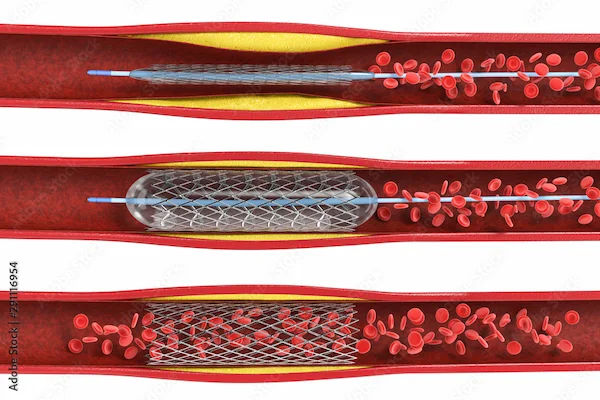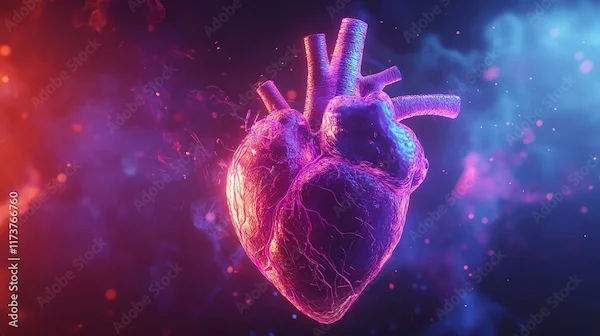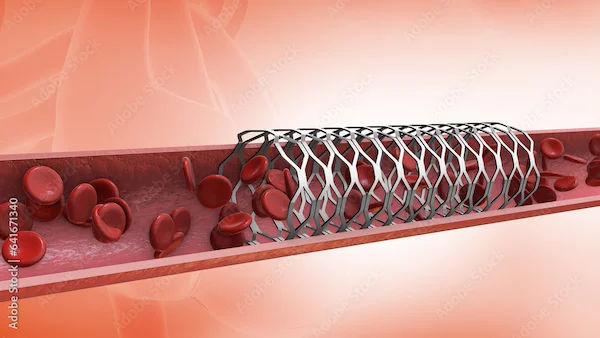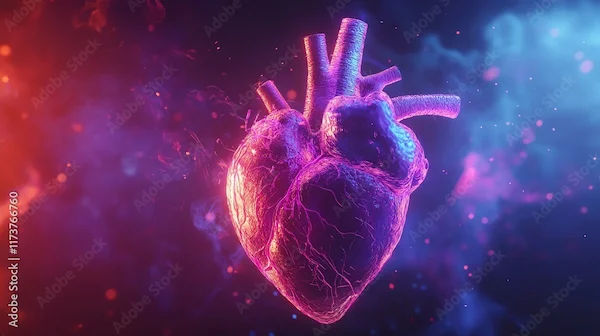Can Angioplasty Be Done Immediately After Angiography?
Find out if angioplasty can be done immediately after angiography. Learn about the timing, benefits, and risks of combining these heart procedures for quicker diagnosis and treatment.

Written by
Last updated on 7th Jul, 2025
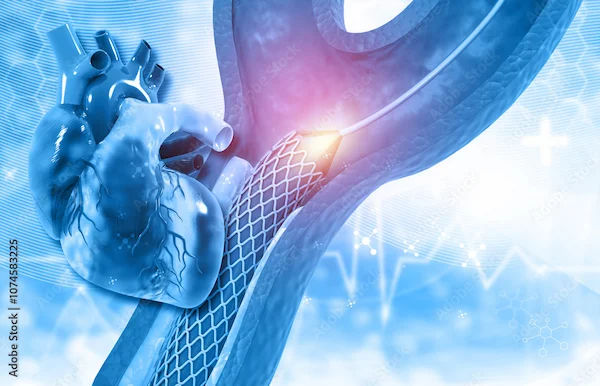
Introduction
If you or a loved one has been advised to undergo angiography, you might wonder whether angioplasty can be done right after the procedure. The short answer is yes, in many cases, angioplasty can be performed immediately after angiography if the doctor identifies a significant blockage that needs treatment. However, the decision depends on several factors, including the patient's condition, the severity of blockages, and the doctor's assessment. Let’s break this down in simple terms to help you understand when and why this might happen.
What is Angiography?
Angiography is a diagnostic test that helps doctors visualise the blood vessels in your heart (coronary arteries) using X-ray imaging and a special dye. A thin, flexible tube called a catheter is inserted into a blood vessel (usually in the wrist or groin) and guided to the heart. The dye highlights any blockages or narrowed areas in the arteries.
What is Angioplasty?
Angioplasty is a treatment procedure used to open blocked or narrowed arteries. If the angiography reveals a severe blockage, the doctor may insert a small balloon through the catheter and inflate it to widen the artery. Often, a stent (a tiny mesh tube) is placed to keep the artery open and improve blood flow.
When is Angioplasty Done Immediately After Angiography?
In certain cases, doctors may recommend performing angioplasty immediately after angiography to quickly restore blood flow and reduce the risk of serious heart complications.
1. Severe Blockage Detected During Angiography: If the doctor finds a critical blockage that is restricting blood flow significantly, they may proceed with angioplasty right away to prevent complications like a heart attack.
2. Emergency Cases (Like a Heart Attack): If a patient is having an active heart attack (STEMI or NSTEMI), immediate angioplasty can restore blood flow and save heart muscle.
3. High-Risk Patients: Patients with unstable angina (chest pain at rest) or those at high risk of a heart attack may benefit from immediate treatment.
4. Doctor’s Recommendation: Sometimes, the doctor may decide based on the patient’s overall health, symptoms, and test results.
Consult Top Specialists for Personalised Tips
When Might Angioplasty Be Delayed?
Here are the causes why angioplasty might be delayed:
1. Multiple or Complex Blockages: If there are several blockages or the anatomy is complex, the doctor may plan a separate procedure for better preparation.
2. Patient’s Condition is Stable: If the blockage is not life-threatening, the doctor may discuss treatment options (medicines, lifestyle changes, or scheduled angioplasty later).
3. Need for Additional Tests: Sometimes, further tests like a fractional flow reserve (FFR) are needed to determine if the blockage requires stenting.
4. Risk of Complications: If the patient has other health issues (like kidney problems or bleeding risks), the doctor may delay angioplasty.
What to Expect During the Combined Procedure?
Things to expect during the combined procedure are as follows:
1. Preparation
You will be given local anaesthesia where the catheter is inserted.
You may receive mild sedation to help you relax.
2. Angiography First
The doctor injects contrast dye and takes X-ray images to check for blockages.
3. Angioplasty (If Needed)
If a blockage is found, a balloon is inflated to open the artery, and a stent may be placed.
The procedure usually takes 30 minutes to 2 hours, depending on complexity.
4. Recovery
You’ll need to rest for a few hours to prevent bleeding at the catheter site.
Most patients can go home the next day if there are no complications.
Benefits of Immediate Angioplasty
The benefits of immediate angioplasty are:
Faster Treatment: Avoids delays in restoring blood flow.
Single Procedure: Reduces the need for a second hospital visit.
Lower Risk of Complications: Prevents worsening of blockages.
Possible Risks
Possible risks of angioplasty are as follows:
Bleeding or bruising at the catheter site.
Allergic reaction to the contrast dye.
Blood vessel damage (rare).
Stent-related issues (like clotting).
After the Procedure: Recovery Tips
Recovery tips after angioplasty are:
1. Rest for 24-48 Hours: Avoid heavy lifting or strenuous activity.
2. Stay Hydrated: Helps flush out the contrast dye.
3. Take Prescribed Medications: Blood thinners (like aspirin or clopidogrel) may be given to prevent clots.
4. Follow a Heart-Healthy Diet: Low salt, low fat, and high fibre.
5. Quit Smoking & Limit Alcohol: Improves heart health.
6. Regular Follow-ups: Monitor recovery and stent function.
When to Seek Immediate Help?
Call your doctor if you experience:
Severe chest pain.
Swelling, bleeding, or severe pain at the catheter site.
Fever or signs of infection.
Shortness of breath or dizziness.
Conclusion
Angioplasty can often be done right after angiography if necessary, especially in emergencies. However, the decision depends on your specific condition. Trust your doctor’s advice, and don’t hesitate to ask questions about the procedure, risks, and recovery. If you’ve been advised to undergo angiography or angioplasty, Apollo 24|7 offers expert cardiac care with advanced technology. You can book a consultation or schedule a test easily through the Apollo 24|7 app or website.
Consult Top Heart Surgeon
Consult Top Specialists for Personalised Tips
Dr. Jayarajah Mariappan
Cardiologist
45 Years • MBBS, MD(GEN MEDICINE), DM(CARDIOLOGY)
Chennai
Sooriya Hospital, Chennai

Dr. Sumanta Chatterjee
Cardiologist
12 Years • MBBS,MD General Medicine,DM Cardiology
Kolkata
HealthYou Speciality Clinic & Diagnostics., Kolkata
(25+ Patients)

Dr. S B Bhattacharyya
Cardiologist
22 Years • MBBS, MD(General Medicine),DM (Cardiology)
Kolkata
Gariaheart Clinic, Kolkata

Dr. Aditya Verma
Cardiologist
13 Years • MBBS, MD General Medicine, DM Cardiology
Kolkata
Apollo Clinic_Opposite South City Mall, Kolkata

Dr. M Sudhakar Rao
Cardiologist
8 Years • MBBS, MD General Medicine, DM Cardiology
Bengaluru
UMC, Kormangla, Bengaluru
Consult Top Heart Surgeon
Dr. Jayarajah Mariappan
Cardiologist
45 Years • MBBS, MD(GEN MEDICINE), DM(CARDIOLOGY)
Chennai
Sooriya Hospital, Chennai

Dr. Sumanta Chatterjee
Cardiologist
12 Years • MBBS,MD General Medicine,DM Cardiology
Kolkata
HealthYou Speciality Clinic & Diagnostics., Kolkata
(25+ Patients)

Dr. S B Bhattacharyya
Cardiologist
22 Years • MBBS, MD(General Medicine),DM (Cardiology)
Kolkata
Gariaheart Clinic, Kolkata

Dr. Aditya Verma
Cardiologist
13 Years • MBBS, MD General Medicine, DM Cardiology
Kolkata
Apollo Clinic_Opposite South City Mall, Kolkata

Dr. M Sudhakar Rao
Cardiologist
8 Years • MBBS, MD General Medicine, DM Cardiology
Bengaluru
UMC, Kormangla, Bengaluru
